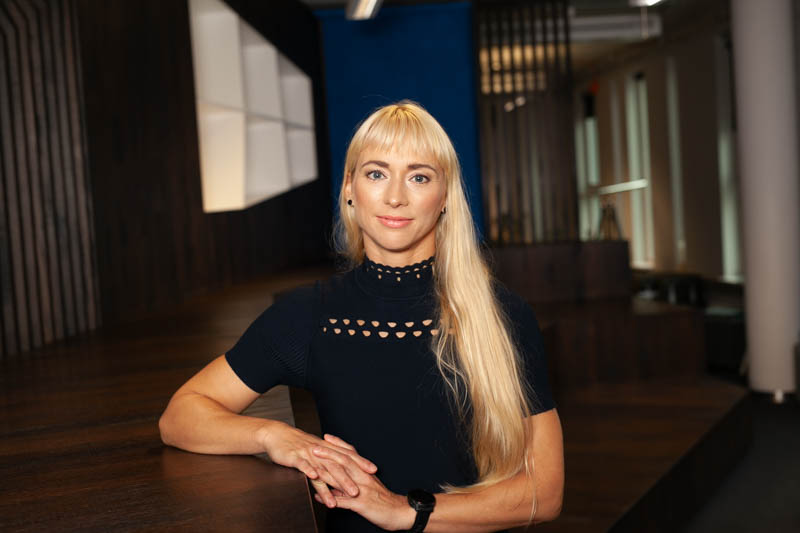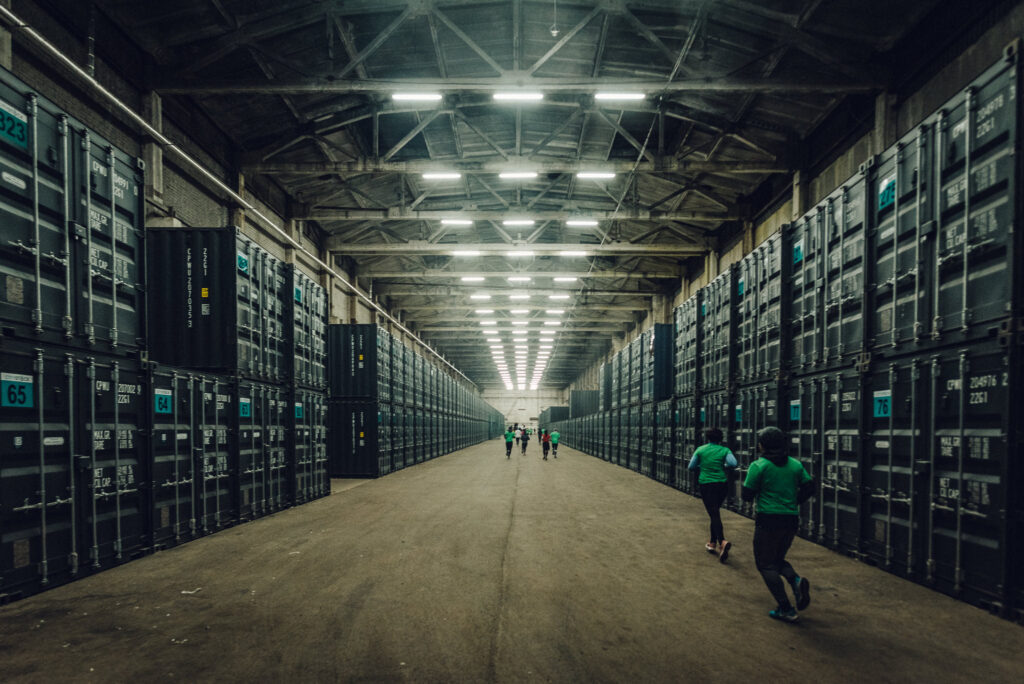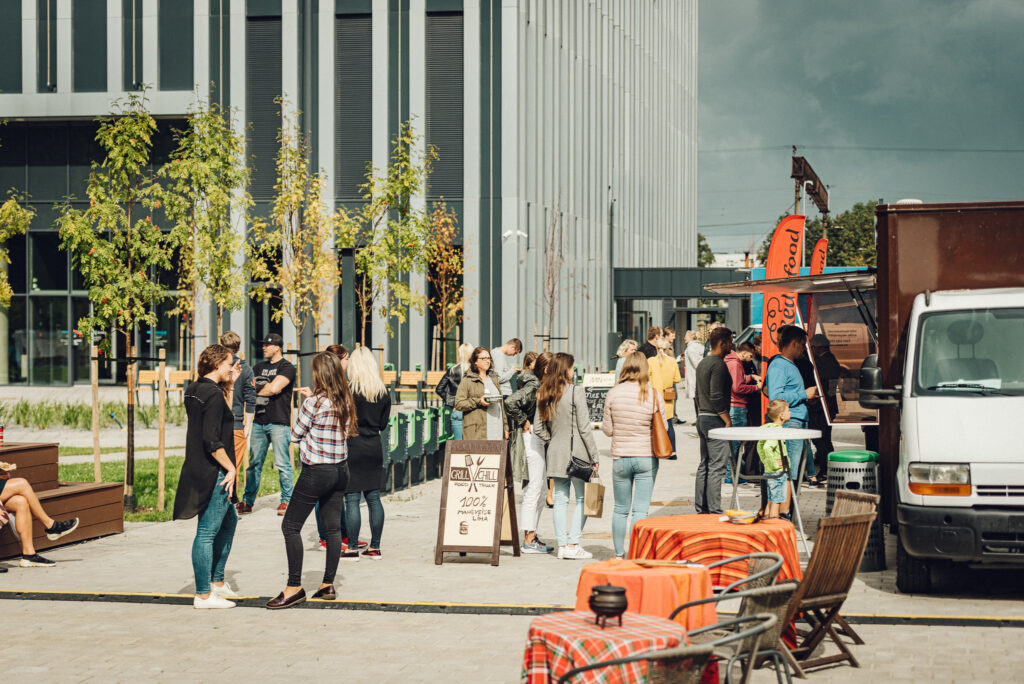Ülemiste City has in the past 15 years evolved from industrial urban fringe to international smart city district. We inquired from the developers about the problems they are tackling in Ülemiste district and how they are assisted by science and technology in solving them.

URSEL VELVE, Chief Innovation Officer at Ülemiste City and Member of the Management Board at Mainor Ülemiste AS.
Why the smart Ülemiste City?
Ülo Pärnits created the vision of Ülemiste City as a smart business city on the premises of the former Dvigatel factory. At the time of its establishment, ‘smart city’ was characterised by the local smart business ventures (mainly IT-businesses at the time) and their employees. By now, however, Ülemiste City has become a versatile smart city focusing on talent and developing the area in four fields: knowledge, services, environment and community.
What is the vision of the developer when creating a region like Ülemiste?
The value of Ülemiste City lies in its innovative, knowledge-based, versatile, collaborative and dedicated outlook. Our development activities in the four fields is guided by these values and our wish is to enable an environment supporting fast growth for local people and businesses. That is why we have created an educational cluster in our campus that houses the Estonian Entrepreneurship University of Applied Sciences, the International School of Estonia, Emili School and Kalli-kalli kindergarten. In addition, we are in close cooperation with 20 local and international universities.
We wish to offer a sustainable and versatile environment for work, study and living with a logistically functional connection to the rest of the world. Through development of residential real estate and the newly completed Lurich residences, our aim is to keep growing from a business district into a residential urban district with necessary services for daily living in convenient proximity.
As a developer, how have you contributed to creating quality spatial solutions and the ensuing active use of these spaces?
In the next few years, Ülemiste City will be contributing to generation of high-quality and attractive outdoor spaces which enable open-air meetings, exercise, relaxation, and communication between c residents and employees. Ülemiste City’s inclusive budget has enabled establishing a street workout station at the heart of our campus, installing hammocks in the park next to the Health Centre for summer months, and in the coming winter we will be installing some bonfire pits to invite people to spend time outdoors even when the weather is a bit colder. We hope to create some arbours in the campus in the coming spring-summer season where people can conveniently hold outdoor meetings. Last summer, the roof terraces on top of Ülemiste Health Centre and the Lurich building were completed. The education complex will further develop areas for outdoor sports activities and since the new schoolhouse is following the principles of movement friendly schools, the roof on top of the first floor in the education complex has been supplied with a roofscape supporting active movement of children.
We want to preserve as much of the old architecture as possible. The MyFitness sports club at Ülemiste is a unique one—the old factory building has been made into a sports club with a swimming pool that is embellished by fascinating support pillars supporting the saw-tooth roof.
There is always something happening outdoors during spring and summer months. Streetfood Tuesdays and community days are very popular, as is the Ülemiste City Business triathlon and the ping-pong tournaments at the Öpik building which sports fans very much enjoy. During COVID, MyFitness offered crossfit training on the rooftop of our parking building so that people were still able to train with a professional trainer.
What are the main challenges you are trying to solve?
The main challenges of Ülemiste City are caused by its rapid development and related to urban planning and mobility. How can we triple in size without tripling the number of cars and maintaining sufficient opportunities for a human-friendly and green environment where people using different means of mobility can feel safe?
To tackle these challenges we have called into existence the Future City professorship in collaboration with Taltech, the City of Tallinn, Telia and Ericsson. To understand urban development and raise the quality of urban life, the professorship is focused on three main themes: a functional city campus, a mobile city campus and smart urban economy.

We are also increasingly emphasising the health behaviour of the 12,000 people at Ülemiste City, and in collaboration with Tartu University we are developing a scientific model focusing on three main factors: the physical, mental and social wellbeing of the employee (e.g., inspiring collegial relations or discrimination). The factors are being monitored from three different levels—what can be done by the employee, the employer and the city campus as a whole.
While collaboration with Taltech and Tartu University is focused on investigating a specific field, in the past summer we introduced Ülemiste City Radar in collaboration with the Estonian Entrepreneurship University of Applied Sciences which uses nearly 50 measures to evaluate the success of the entire Ülemiste City innovation campus. The radar accounts for the attractiveness of the campus as both a business and as a sustainable green environment, and the corresponding services. This initiative will serve as a kind of city control board for us that we can use in real time to evaluate if and how fast we are progressing toward our innovation goals.

GERT JOSTOV, CEO at Technopolis Ülemiste AS and Association of Estonian Real Estate Firms
Why the smart Ülemiste City? What is the expected added value?
Ülemiste City does not only employ the newest technologies, we are also the test environment for new projects. For example, the self-driving buses by Auvetech were driving around in the city in the summer; those have moved on to Greece by now. For a while, the city has been testing the smart Bercman crosswalk which ‘smartness’ is not actually embedded in the crossing itself but in the traffic sign equipped with cameras and sensors that measure the movement of the pedestrians and vehicles, forecasting their trajectories. Additional signs like that will be implemented throughout the city. We wanted to test the Snowbot but lack of snow last season prevented that, so we are placing our hopes on the coming winter. We are strongly focused on green agenda and in collaboration with the Green Tiger initiative we are in the process of mapping and solving problem areas. Hopefully our solutions could serve as an example for solving environmental problems in other urban areas or similar business districts. The smartness is inherent in the inclusion of various partners as the campus has more than one developer. The Technopolis Group introduces to this equation a nearly forty-year-long experience in developing offices and business centres throughout northern Europe.
What vision does the developer adhere to when creating such a district?
Our vision is that by 2035 there will be 36 ha of environment where living, studying and working are in perfect balance. Ülemiste City will become 24/7 district, where people from the rest of the city as well as the surrounding parishes come to visit restaurants, attend events on the campus or just spend time in our parks. The campus borders on Tallinn Airport and its extension on one side and the Rail Baltic terminal on the other, which will be connected by European Square in the future. We are also entertaining a dream that the Tallinn-Helsinki tunnel station would emerge at this site. That would make Ülemiste City the central node of transportation and an ever more attractive environment for the local businesses.
As developer, how have you contributed to the creation of quality space and its active use?
It is a crucial hygiene requirement that meeting rooms in buildings are equipped with CO2 sensors and that lighting and water consumption is regulated with motion detectors. All new building are energy efficient and LEED-certified, older buildings that are used as office buildings have also been given certificates. We have set a goal in the City to have become carbon neutral energy consumers by 2030. The first step we took in this direction was to switch over to green energy throughout the entire campus. Next, we are planning to optimise heating and cooling. First the new solution will be implemented in the new buildings and gradually we will be replacing other heating and cooling systems with remote control which is significantly more environmentally conscientious.

We have put a lot of thought into green areas and leisure spaces. One of the most favourite spots for people is Lõõtsa Park. A water reservoir with a water tower, lounging chairs and seating areas in the greenery create as truly relaxing atmosphere. Last summer, Viktor Square with a seating area reminiscent of an amphitheatre was completed—it is a great place for organising concerts. Ülemiste City also features an outdoor gym, hammock park and many safe and secure Bikeep bicycle parking spots. The City hosts over 100 events each year, some of which are meant for our people only, while outdoor events are open to the general public. We put great emphasis on building a sense of community and we want our talents to feel that in addition to being valued by the employer they are also nestled in the Ülemiste City community.
What are the main challenges you are trying to solve (developing the campus, creating the desired environment)?
Currently, the toughest challenge is reducing car-dependant mobility, which is not significally supported by the public transportation system of the City of Tallinn. The campus is currently traversed by five buslines and one tramline. We have not yet achieved a direct transport line to the campus from every Tallinn subdistrict. For example, it takes nearly twice the amount of time for a resident to come to the campus from Tondi using public transportation than it does by car. We need to create multiple underpasses underneath the railway to provide multiple access points to Ülemiste subdistrict from Peterburi road for people arriving on foot, by car or bicycle. Building the small ringroad of Tallinn and ringrailway, would help with this tremendously. Bikelanes should also singnifically improved, so that commuters might reach Ülemiste City without putting their lives at risk
Interviewed by Kristi Grišakov
HEADER: Tänavatoidu teisipäevad linnakus. Foto: Marek Metslaid
PUBLISHED: Maja 103 (winter 2021) Smart Living Environment





